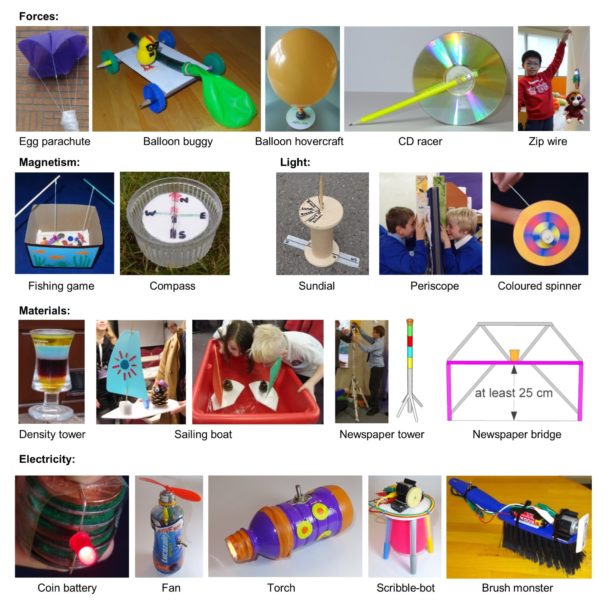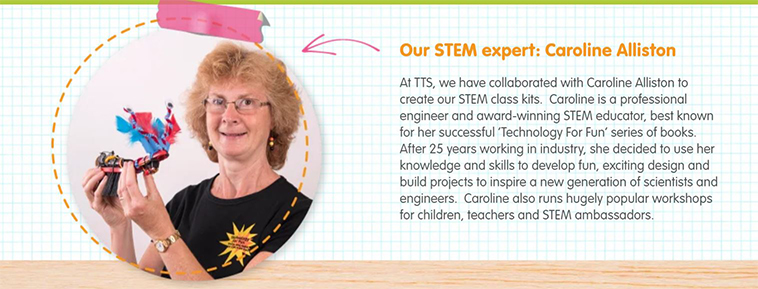The concept of STEM learning is to combine science, technology, engineering and maths to create something that is greater than the sum of its individual parts. Combining these subjects together can help pupils understand how the subjects they study can be applied in real life.
I have selected five STEM topics that can be readily investigated at home using fun design and make projects.
The projects are listed in order of increasing difficulty; it is advisable to start with an easier one initially.

This photo montage shows examples of models from each project:

I recommend selecting a topic and an associated project, and setting aside a period of time (e.g. 2-3 hours) in which to tackle it. You and your children might want to come up with your own designs from scratch, search for suitable designs on the internet (e.g. on YouTube) or source instructions from the list I have given at the end of this blog.
Check beforehand whether you have the required materials and tools available in the house for the project you intend to complete.
If you don’t have these then try coming up with creative alternatives. For example, if you don’t have a glue gun you can try Sellotape, double sided tape, double sided foam tape, rubber bands or Blu Tack for joining things together. If you don’t have a bar magnet then try a fridge magnet. However, if you don’t have crucial items (such as a balloon to make a balloon hovercraft) you will need to select a different project!
I recommend starting each session by learning or revising the topic. If you have a parent or grandparent available you could ask them to help – several grandparents I know of are currently helping out by teaching their grandchildren remotely. Here are some useful links to the topics. You can tell that I really like BBC Bitesize, because it makes topics clear and easy to understand!
| Topic | Sub-topic |
| Forces | Force |
| Friction | |
| Air & water resistance | |
| Gravity | |
| Magnetism | Magnets |
| Magnetic materials | |
| Materials | Material properties |
| Buoyancy | |
| Light | Light and dark |
| Reflection | |
| Colour | |
| Electricity | Electricity |
| Batteries | |
| Circuits | |
| Conductors & insulators |
Once you have revised the topic you are ready to start creating. If possible, I recommend that an adult is available to assist in case of difficulties in either finding suitable tools and materials, or in constructing and testing the models. Some of these are freely available either from TTS or on the Technology for Fun YouTube channel.
Others are to be found in the TTS STEM Activity Cards.
I hope you find this useful and that you (and your children!) enjoy having a go at some of the projects.
For more ideas of fun design and make STEM activities check out my website: www.technologyforfun.co.uk

With thanks to Caroline Alliston for writing this blog.


